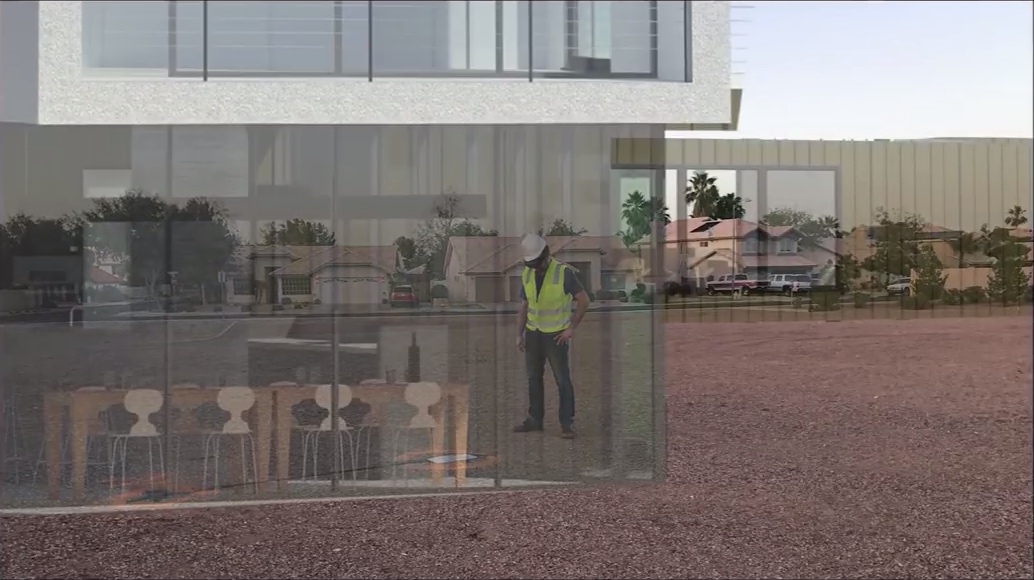Last month, software developer VisuaLive3D released a plugin to push BIM models from Revit directly to HoloLens. Along with the plugin, the company released HoloLive3D.
HoloLive3D is a HoloLens application that loads BIM, places them in the real world in true 1:1 scale, and allows users to perform BIM coordination, QA/QC, field validation and clash detection, even without any internet connection. The application provides additional features such as Scale, to scale the models up/down for office presentations; and Measure, which works as a virtual measuring tape to gather data on existing conditions or compare model content to find deviations between the design and the as-built.
To place the models in the real world you use VisuaLive3D’s plugin to predefine a reference/survey point in the BIM, and then you use HoloLive3D to click on the same point in the field. From there, HoloLive3D aligns the model in the proper location. Another way is to define a QR Code in the reference point through the plugin, so HoloLive3D scans it, and it automatically loads the BIM in place. The video below shows how this works.
Alignment Accuracy
For any application that aligns a BIM to the real world, spatial mapping presents a problem, as the Hololens’ 3D sensing technology is not accurate enough to align a BIM model to a real space. To understand how well HoloLive3D works under these circumstances, we asked VisuaLive3D President & CEO Saeed Eslami what was the workaround for this issue.
Eslami said that VisuaLive3D has improved the accuracy of the HoloLens mapping technology by increasing the density of the maps—including creating more surface triangles—as well as refreshing the map at a higher frequency than the HoloLens to revise the map with greater speed. He also told us that VisaLive3D has developed a more powerful mathematical averaging formula, and even leveraged deep learning AI.
“We definitely work on this every day,” he said, “as accuracy is the number one priority for us.”
Dealing with Big Models on a Mobile Device
Another issue with HoloLens is performance. When using a high-density BIM, the systems can become slow and hard to use. VisuaLive3D faces this problem using a processing optimization method, so the software compresses any large 3D model content to a smaller and more efficient file format, which enables HoloLens to load large models in only a few seconds.
Eslami said, “For example, the Revit sample model is a full house with all model elements and details, and it loads only in 2 seconds in our app! A full mechanical room with all MEP elements loads only in 5 seconds!“
Final Details
Although VisuaLive3D’s plugin works with Revit models only, it’s possible to import AutoCAD models through the plugin to Revit and then to HoloLens.
The HoloLive3D application is now available in the HoloLens Microsoft Store for free. Users need to request a license for the Free Trial, which includes access to full tutorial videos and documents to work with. The application’s licensing works on a subscription-based system, and discounts are available based on the number of users and license period.
In the meantime, the company is working on upgrading its software, adding new features, and creating more plugins for all major software within the AEC industry. They are also working on two other applications for 3D models visualization: MobiLive and VRLive.






